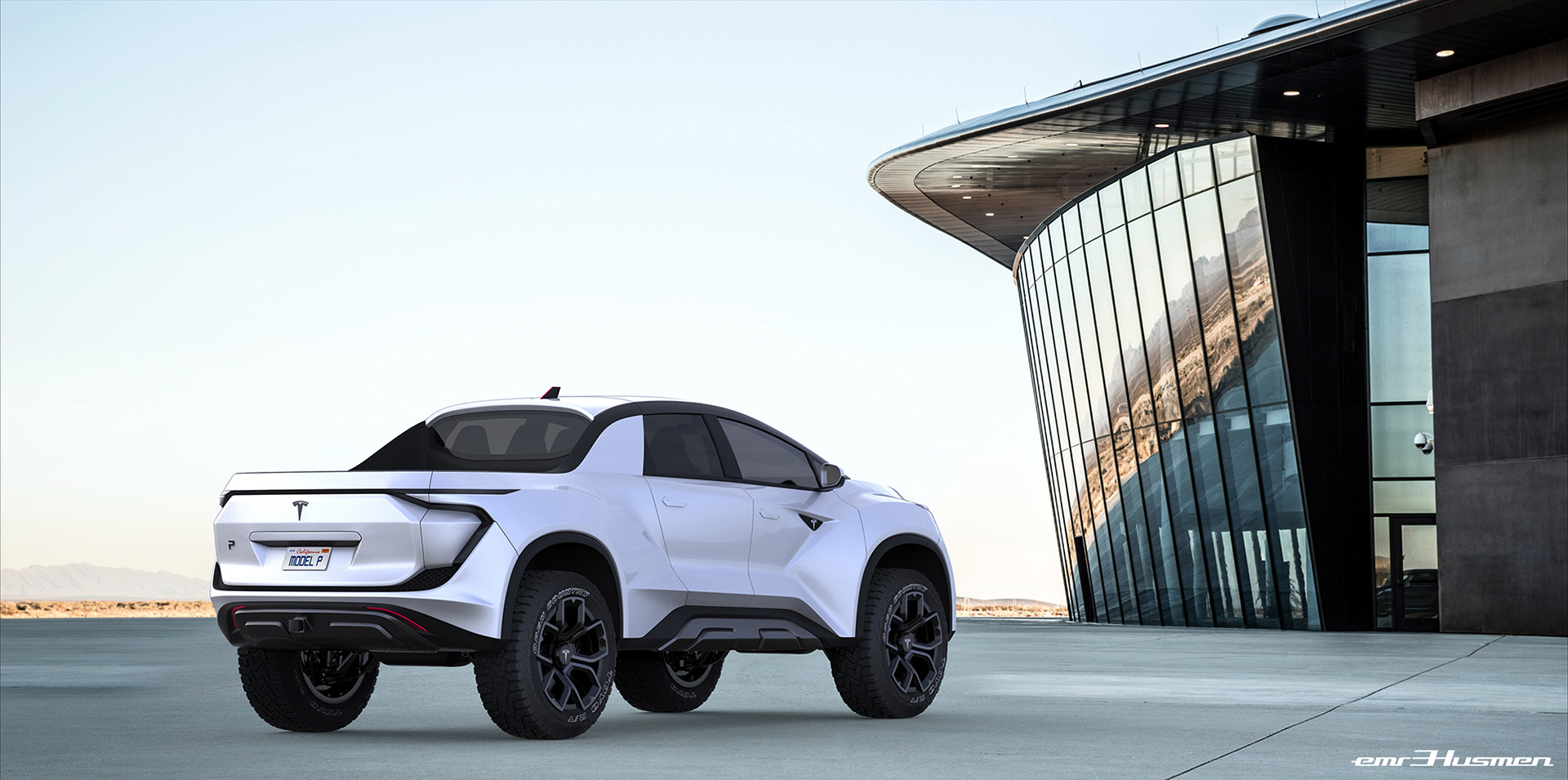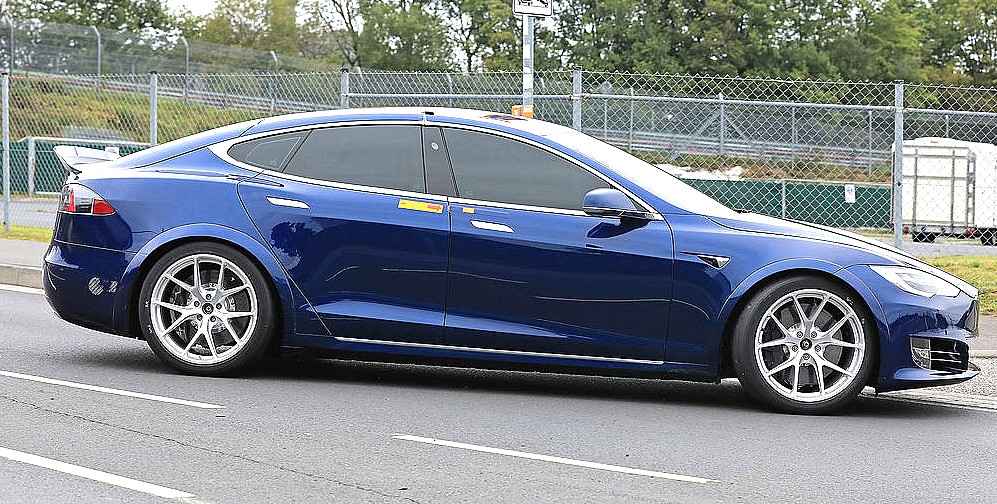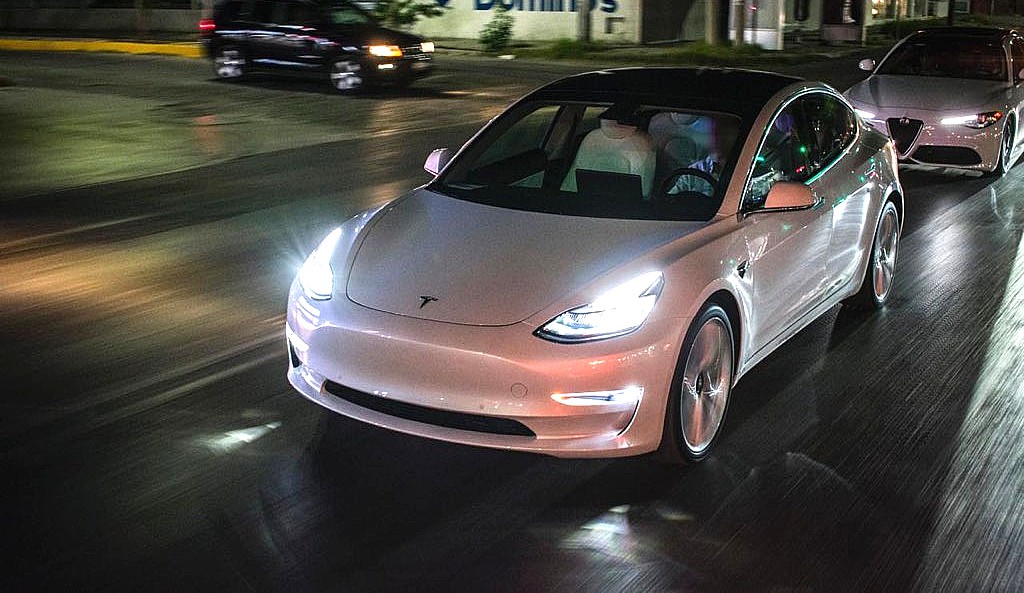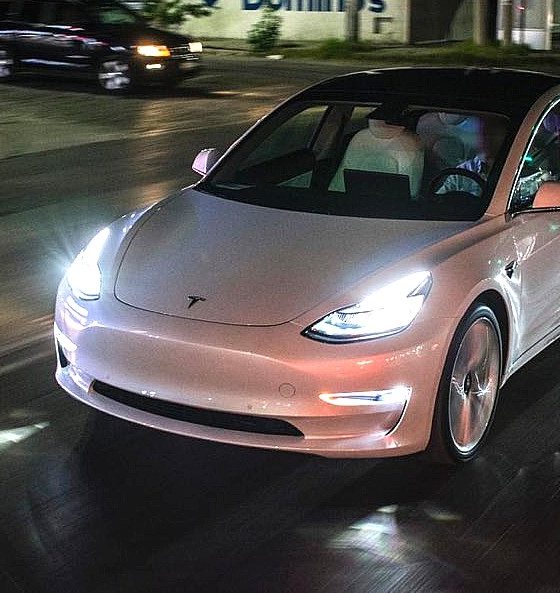Welcome to a FREE preview of our weekly exclusive! Each week our team goes ‘Beyond the News’ and handcrafts a special edition that includes our thoughts on the biggest stories, why it matters, and how it could impact the future.
You can receive this newsletter along with all of our other members-exclusive newsletters, become a premium member for just $3/month. Your support goes a long way for us behind the scenes! Thank you.
—
I know, I know. Just asking the question, “Is there anything Tesla can’t do?” alone sounds like stooge-level propaganda with a predictable answer at the end: No. However, I promise you that I’m actually considering it objectively in light of what has been parading in the headlines.
The Porsche Taycan vs. Tesla debates were a bit exhausting over the last couple of weeks, but the ‘Plaid Mode’ reveal took them to another level. Then, a German media outlet reported that a Model S already beat the Taycan’s Nürburgring time by almost 20 seconds after all that hoopla about “turns” and overheating being inevitable doom bringers for Tesla.
And all this excitement started co-existing with more news about the spiffy stuff included in the V10 firmware update that Tesla’s Early Access Program participants were downloading. Leaked pictures of the made-in-China Model 3 were really just the icing on the cake yesterday for anyone keeping score.
So, I think it’s fair to start wondering what Tesla has left to achieve that may be a serious challenge.
Obviously, there’s plenty on the plate for the next few years at least: Model Y, the Tesla Truck, the Tesla Semi, the next generation Roadster, and now refreshed ‘Plaid Mode’ Model S’s and X’s. Oh, and the regulatory hurdles to make Full Self-Driving a legal reality still need to come through. I suppose having a few more Gigafactories would be a good idea also, like the one teased for Europe.
Okay. Perhaps this question is more tedious than I thought. On one hand, Tesla doesn’t need to do everything a car maker could possibly do. Plenty of manufacturers are content with sticking with their niche markets. But I don’t see Tesla settling for that, especially considering all the markets they’re targeting already and the sales numbers they’re aiming to achieve.
How about outdoor-oriented vehicles, considering the next competitor for Elon Musk to comment on will likely be Rivian? The Michigan-based EV newcomer has completely branded itself to appeal to the travel adventure crowd, and their R1T pickup truck has every whiz-bang thing (to borrow a phrase) they could dream of needing for a mountain camping trek. Rivian even has a patent application for a “digital” jerrycan to extend their battery range for such trips.

While the Tesla Truck is coming, a ‘Blade Runner’ cyberpunk theme doesn’t seem to have the Rivian-type customers in mind. That’s fine, but would Tesla want to appeal to that base if it proves lucrative? Why bother building a truck in the first place if you don’t want to attract, you know, truck people? Rivian’s R1S SUV might really be where the customers are, though. The Model Y will appeal to a significant base, but the R1S will tap into another large crowd as well. The Model X may be the Fabergé egg of cars, but sports and camping-oriented families may find an SUV that’s traditionally designed and half the price a bit more…feasible.
It seems like there may be a decent amount of crossover between Tesla and Rivian’s bases – both sets of customers have similar values and possibly similar budgets. Will Tesla make a play with its own rough-and-tumble vehicles? Or will they just peacefully co-exist? I mean, Tesla and Porsche are supposedly not really meant to be competitors, yet there’s still a Model S at Nürburgring despite that um, fact.

What about military vehicles? Other automakers like GM and Ford have developed equipment for defense purposes over the decades, and Musk is already well versed in having government entities as customers via SpaceX. The US military is looking for alternative fuel vehicles, although hydrogen fuel cell tech seems the be the focus. I’m sure Tesla’s tech could easily win any competition, especially given their semi truck work and advanced battery products. But, would Tesla even want that sort of customer? SpaceX and Tesla have different core missions, although they are compatible. I could also lay out some ironies in Tesla developing military vehicles, but I’m sure you can imagine what they are.
Finally, what about smaller vehicles like water crafts, ATVs, motorcycles, etc.? Non-vehicle products? Those are areas several other car makers have entered as separate ventures, and successfully at that. Musk may have once joked about Tesla making an electric leaf blower, but Honda could perhaps vouch for the profitability of home DIY equipment. Rivian has even hinted that it’s developing something that’s ‘not necessarily’ a car. After going from the original Roadster to manufacturing and delivering several types of cars all over the world (not to mention solar kits), Tesla could probably easily outfit its customers’ homes with a variety of other battery-powered products. Tesla vs. John Deere, anyone? I’m not sure what kind of culture war that might ignite, but Musk isn’t really the type to back down from such a challenge.
It doesn’t seem like Tesla needs much more on its plate in the immediate future, but after seeing what they’ve accomplished thus far in so little time, the next expansion may end up being around the corner before we know it.

Lifestyle
Tesla Model S Plaid battles China’s 1500 hp monster Nurburgring monster, with surprising results
There is just something about Tesla’s tuning and refinement that makes raw specs seem not as game-changing.

The Tesla Model S Plaid has been around for some time. Today, it is no longer the world’s quickest four-door electric sedan, nor is it the most powerful. As per a recent video from motoring YouTube channel Carwow, however, it seems like the Model S Plaid is still more than a match for some of its newer and more powerful rivals.
The monster from China
The Xiaomi SU7 Ultra is nothing short of a monster. Just like the Model S Plaid, it features three motors. It also has 1,548 hp and 1,770 Nm of torque. It’s All Wheel Drive and weighs a hefty 2,360 kg. The vehicle, which costs just about the equivalent of £55,000, has been recorded setting an insane 7:04.957 at the Nurburgring, surpassing the previous record held by the Porsche Taycan Turbo GT.
For all intents and purposes, the Model S Plaid looked outgunned in Carwow’s test. The Model S Plaid is no slouch with its three motors that produce 1,020 hp and 1,420 Nm of torque. It’s also a bit lighter at 2,190 kg despite its larger size. However, as the Carwow host pointed out, the Model S Plaid holds a 7:25.231 record in the Nurburgring. Compared to the Xiaomi SU7 Ultra’s record, the Model S Plaid’s lap time is notably slower.
Real-world tests
As could be seen in Carwow’s drag races, however, Tesla’s tech wizardry with the Model S Plaid is still hard to beat. The two vehicles competed in nine races, and the older Model S Plaid actually beat its newer, more powerful counterpart from China several times. At one point in the race, the Xiaomi SU7 Ultra hit its power limit due to its battery’s temperature, but the Model S Plaid was still going strong.
The Model S Plaid was first teased five years ago, in September 2020 during Tesla’s Battery Day. Since then, cars like the Lucid Air Sapphire and the Xiaomi SU7 Ultra have been released, surpassing its specs. But just like the Model Y ended up being the better all-rounder compared to the BYD Sealion 7 and the MG IM6, there is just something about Tesla’s tuning and refinement that makes raw specs seem not as game-changing.
Check out Carwow’s Model S Plaid vs Xiaomi SU7 drag race video below.
Lifestyle
500-mile test proves why Tesla Model Y still humiliates rivals in Europe
On paper, the BYD Sealion 7 and MG IM6 promised standout capabilities against the Model Y.

BYD is seeing a lot of momentum in Europe, so much so that mainstream media has taken every opportunity to argue that the Chinese automaker has beaten Tesla in the region. But while BYD sales this year in Europe are rising and Tesla’s registrations remain challenged, the raw capabilities of vehicles like the Model Y are difficult to deny.
This was highlighted in a 500-mile challenge by What Car? magazine, which showed that the new Tesla Model Y is more efficient, cheaper to run, and more reliable than rivals like the BYD Sealion 7, and even the nearly 400 KW-charging MG IM6.
Range and charging promises
On paper, the BYD Sealion 7 and MG IM6 promised standout capabilities against the Model Y. The Sealion 7 had more estimated range and the IM6 promised significantly faster charging. When faced with real-world conditions, however, it was still the Model Y that proved superior.
During the 500-mile test, the BYD nearly failed to reach a charging stop, arriving with less range than its display projected, as noted in a CarUp report. MG fared better, but its charging speeds never reached its promised nearly-400 kW charging speed. Tesla’s Model Y, by comparison, managed energy calculations precisely and arrived at each stop without issue.
Tesla leads in areas that matter
Charging times from 25% to 80% showed that the MG was the fastest at 17 minutes, while Tesla and BYD were close at 28 and 29 minutes, respectively. Overall efficiency and cost told a different story, however. The Model Y consumed 19.4 kWh per 100 km, compared to 22.2 for MG and 23.9 for BYD. Over the full trip, Tesla’s charging costs totaled just £82 thanks to its supercharger network, far below BYD’s £130 and MG’s £119.
What Car? Magazine’s testers concluded that despite BYD’s rapid sales growth and the MG IM6’s seriously impressive charging speeds, Tesla remains the more compelling real-world choice. The Model Y just offers stability, efficiency, and a proven charging infrastructure through its Supercharging network. And as per the magazine’s hosts, the Model Y is even the cheapest car to own among the three that were tested.
Watch What Car? Magazine’s 500-mile test in the video below.
Lifestyle
Tesla Cybertruck slapped with world’s least intimidating ticket, and it’s pure cringe
One cannot help but cringe and feel second-hand embarrassment at the idea of a person just driving around with a stack of these babies.

A Cybertruck parked at Stanford Shopping Center in California was recently hit with what might be the most try-hard piece of paper ever slipped under a wiper blade: a “fake citation” accusing the driver of supporting a “fascist car.”
The note, shared on X by Tesla staff program manager Ryan Torres, quickly made the rounds on X, where it quickly gained attention as an example of how not to protest.
The world’s least intimidating ticket
According to the citation, the supposed “violation” was “driving a fascist car.” The remedial action? Take the bus, call an Uber, or ride a bike. The note also dubbed Elon Musk a “chainsaw-wielding Nazi billionaire.” Now, protests against Tesla and Elon Musk have become commonplace this year, but one cannot help but cringe and feel second-hand embarrassment at the idea of a person just driving around with a stack of fake anti-Tesla/Musk citations.
Torres pointed out the irony himself in his post on X. Tesla currently employs over 140,000 Americans, and SpaceX has put the U.S. firmly back at the top of space technology. As Torres put it, maybe the person behind the world’s least intimidating ticket should “read a book on innovation before vandalizing” other people’s property.
Peak performative clownery
Not to mention that the fake ticket’s logic collapses under its own weight. EVs like the Cybertruck are literally designed to reduce emissions, not “destroy the economy.” If anything, Tesla has bolstered the United States’ economy by fueling jobs in engineering, manufacturing, and clean energy. It’s not the first time a Tesla has been the target of vandalism or politically charged notes, but this one stands out for sheer cringe value.
Torres summed it up neatly: “Peak clownery.” On that point, at least, the citation earns full marks. In a way, though, perhaps cringe fake tickets are not as bad as the literal firebombs that were being thrown at Tesla stores and cars earlier this year because some critics were gleefully misinformed about Elon Musk.










